Your dog bolts, barks, ignores, and drags you like a rag doll. We've been there, and we know that's where a dog training collar comes in handy.
These training wonders help your furry buddy focus, listen, and chill without turning into a robot. Whether you're raising a rowdy retriever or an energetic Terrier, our list has their perfect match. Here's a little peek at the top options, then we'll cover all the details.
9 Best Dog Training Collars for Every Training Style
Best Overall – PetSafe Remote Training Collar
Best Vibration-Only Collar – SODOG No Shock Training Collar
Best for Barking – FAFAFROG Dog Bark Collar
Best Budget Pick – ByteRoll Rechargeable Training Collar
Best for Multiple Dogs – PalPaitek # Dog Collar Training Set
Best for Large Dogs – SportDOG 425X FieldTrainer Remote Collar
Best for Small Dogs – PaiPaitek Training Collar for Small Dog
Best Waterproof – Jugbow Waterproof Training Collar
Best Shock Training Collar – INVIROX Training Shock Collar
What Is a Dog Training Collar?
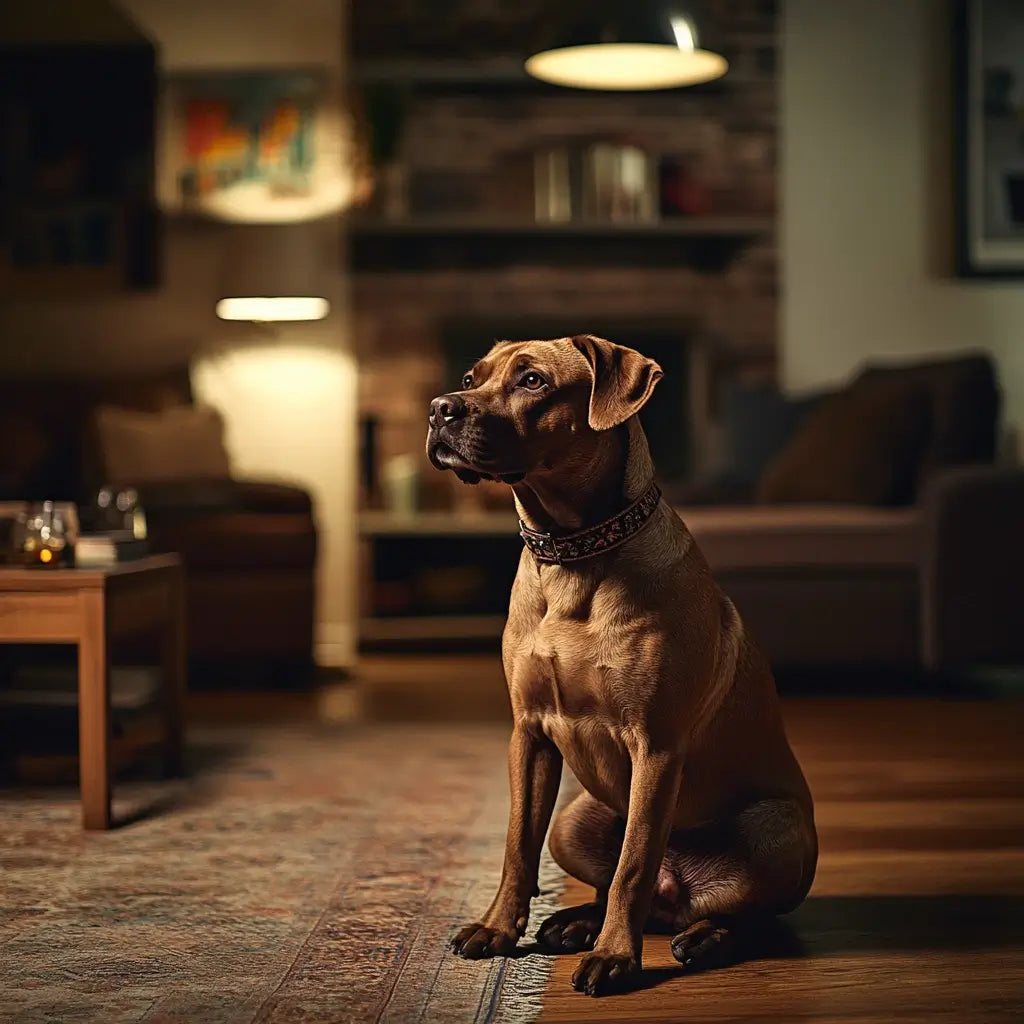
A dog training collar helps teach commands like sit, stay, and come. It looks like a regular collar but includes settings like sound, vibration, or low-level static. These signals get your pet's attention without yelling or pulling.
Training collars reinforce directions and reduce unwanted behavior during obedience training. They give quick feedback, which helps dogs connect the action with the response. When used right, these collars are a helpful tool for both new and experienced dog owners.
Purpose of Training Collars in Dog Behavior
Training collars work by giving a gentle cue, like a sound or vibration, when a behavior needs correcting. That feedback helps dogs focus, especially during obedience training. These dog collars support better habits, like walking without pulling or stopping when called. They also help reduce bad habits like jumping, barking, or chasing. Used consistently and kindly, a training collar becomes part of a clear communication system between pets and owners.
Different Types of Training Collars Explained
Each training collar works a little differently, depending on your learning goals and your dog's personality. Here's a quick breakdown of the main types you'll find:
- Remote Training E-Collar. Comes with a handheld remote, so you can choose the signal and timing.
- Vibration Collar. Uses gentle vibrations to get your dog's attention without static stimulation.
- Sound Collar. Emits a beep or tone to signal correction.
- Static Collar. Sends a mild static pulse. Many have adjustable levels.
- GPS Collar. Good for dog tracking. Sometimes includes training features.
- Slip Collar. Tightens with pressure. Often used in leash training.
- Prong Collar. Has metal links that apply even pressure around the neck. Not for beginners.
- Spray Collar. Releases a harmless burst of citronella or air to interrupt unwanted actions.
Do Training Collars Work for All Dogs?
Training collars can work for most dogs, but they're not a one-size-fits-all solution. Breed, size, age, and personality all play a role. Some dogs get the hang of things fast, while others need time and practice. If your pooch shows signs of fear, switch methods or talk to a professional trainer for help.
When To Use a Training Collar for Dogs
Use a training collar when your dog needs help absorbing instructions or stopping bad habits. It's great for recall, walking on a leash, or staying focused around distractions.
Start when your dog is alert and ready to learn. Avoid using it when they're scared, overwhelmed, or unsure. Training collars work best with structure, rewards, and clear instruction. Slowly introduce these tools to help build trust.
Factors Like Size, Age, and Behavior
Always match the collar to your dog's size and weight. Most options list recommended sizes and breeds, so check those before buying.
Young puppies may not be ready for certain collars, so wait until they're old enough to understand commands. Also, consider your dog's temperament. An anxious canine may do better with vibration than static.
Benefits of Using a Training Collar for Dogs
Training collars are tools, not shortcuts, for building good habits and better focus. When used with care and consistency, they can help speed up learning and cut down on confusion. Let's discuss these benefits in the next sections:
- Better Communication and Reinforcement
- Supports Consistent, Positive Training Methods
- Helps Address Barking, Pulling, and Aggression
Better Communication and Reinforcement
Training your dog using a collar helps you send clear, fast signals they can understand. Instead of shouting or repeating instructions, a quick vibration or beep can do the job. It keeps training smooth and focused, even in busy places.
Dogs learn faster when they get instant feedback. These collars help connect the action to the correction in real-time. That kind of timing builds better communication between you and your companion.
Supports Consistent, Positive Training Methods
A training collar helps you give the same signal every time, which keeps your cues clear, even if you're not right next to your dog. Pairing the collar with treats, praise, or play makes training feel like a team effort. Remember, the collar is just one tool in a system built on trust and positive reinforcement.
Helps Address Barking, Pulling, and Aggression
With a training collar, a quick signal interrupts the unwanted behavior and helps redirect your pet's focus. That's effective timing and control.
For dogs with anxious behaviors, a training collar can support calmer routines when paired with other tools. HolistaPet offers a line of calming CBD products (treats, chews, oils, and capsules) that may help ease agitation and support balance naturally. Check our website for options.
What To Look for in the Best Training Collars for Dogs
The best dog training collar fits your dog's size, behavior, and training goals. Before you buy, check for:
- Adjustable Fit and Sizing Options
- Safe Stimulation Levels (Sound, Vibration, Static)
- Waterproof or Weatherproof Design
- Long Battery Life or Rechargeable Units
Adjustable Fit and Sizing Options
Look for a training collar with adjustable straps that fit snugly without squeezing your dog's neck. Always measure before buying. Many brands list weight or breed ranges, so use that as a guide. A good fit keeps the collar in place, so signals land where they should.
Safe Stimulation Levels (Sound, Vibration, Static)
The best collars offer various settings, so you can choose what works for your dog. Start with sound or vibration before trying static. If you use static, keep it low and always observe how your buddy reacts.
Safety means control. Remote collars let you adjust levels instantly, while auto collars usually have built-in limits. Look for models with clear instructions and easy-to-use buttons or dials.
Waterproof or Weatherproof Design
Waterproof training collars keep working whatever the weather or wild adventures your dog finds. Some options can handle splashes, while others can survive full-on swimming. Always check the product label for its water rating.
Long Battery Life or Rechargeable Units
Look for collars with long-lasting power, so you're not charging every night. Some models last days or even weeks on a single charge. Rechargeable units are easier on your wallet and better for the planet. Plus, most models come with quick-charging options.
Related Post: 6 Best Dog Tie-Out Kits: Tie-Out Stakes, Leashes & Collars
Choosing the Right Training Collar for Dogs by Size and Need
A small pooch with a narrow neck needs a lightweight collar that won't drag or slip. A bigger dog may need something stronger that can handle more pull without losing comfort. Behavior matters, too. A calm canine might respond to a sound or vibration, while a stubborn puller may need a collar with multiple settings.
Think about what you're trying to teach, how your pet reacts, and what makes them feel safe. The right collar should support training, not create fear or frustration.
Small Breed-Friendly Options
For tiny dogs, look for models made for small necks and using soft, flexible materials. The collar should stay snug without adding bulk or pressure. Choose ones that use sound or vibration rather than static, as small breeds often respond well to low-level cues. Always check the weight and sizing guide to make sure it suits your pet's neck and body type.
Collars for Medium To Large Dogs
For medium to large dogs, look for sturdy designs that stay put during walks or training sessions. Adjustable straps help get the right fit for thicker necks. Many options for bigger dogs come with multiple training modes, like beep, vibration, and static. This gives you more control based on your pet's behavior and training progress.
Gentle Collars for Sensitive or Nervous Dogs
If your dog spooks easily or shows anxious behaviors, vibration or sound-only collars work best. Avoid anything too intense or bulky, as it can cause more upset than help. Look for models labeled as gentle or beginner-friendly, with soft padding and lightweight materials for added comfort.
9 Best Dog Training Collars for Every Training Style
No two dogs train the same way, and that's why one collar doesn't fit all. This list covers options for every need: non-shock, low-shock, waterproof, small breeds, large dogs, and everything in between. Let's find the one that fits your furry friend's vibe.
Best Overall – PetSafe Remote Training Collar

The PetSafe Remote Training Collar is lightweight, waterproof, and perfect for off-leash training within a 100-yard range (with options up to 900 yards). With sound, vibration, and 15 levels of static, plus a safety lock, this collar adapts to your pet's learning style. It fits dogs 8 lbs and up, with neck sizes from 6 to 23 inches. The remote feels great in your hand, and both parts recharge in just two hours.
Best Vibration-Only Collar – SODOG No Shock Training Collar

The SODOG No Shock Training Collar offers a gentle way to teach without stress. With 16 vibration levels and a beep mode, it works well for everything from barking to recall. The range reaches up to 650 feet, and the waterproof design keeps training on track rain or shine. It fits dogs from 10 to 120 pounds and lasts up to 20 days on a single charge.
Best for Barking – FAFAFROG Dog Bark Collar

The FAFAFROG Bark Collar uses a chip that detects both barking and throat vibrations with no remote needed. With four modes and five sensitivity levels, it adjusts to your pet's needs in real-time. If they trigger it six times in a row, it pauses for 30 seconds to prevent overstimulation. This model is waterproof, fast-charging, and fits canines from 8 to 150 lbs.
Best Budget Pick – ByteRoll Rechargeable Training Collar

This affordable ByteRoll Training Collar offers beep, vibration, and static with tons of level options, perfect for customizing your training. If you want to skip the static, just remove the contact points. This model fits dogs 15–110 lbs and comes with two probe sizes for different coats. With a 1,600-ft range, waterproof build, and up to 45-day battery life, this budget pick totally goes the distance.
Best for Multiple Dogs – PalPaitek # Dog Collar Training Set

The PaiPaitek Training Set comes with three collars and one remote to manage them all. It's gentle, prongless, and built for comfort with no digging into the dog's neck. With a whopping 3,300-ft range, you'll stay in control at the park or in the yard. Waterproof, long-lasting battery, and fits canines from 5 to 120 lbs, this set keeps training stress-free.
Best for Large Dogs – SportDOG 425X FieldTrainer Remote Collar
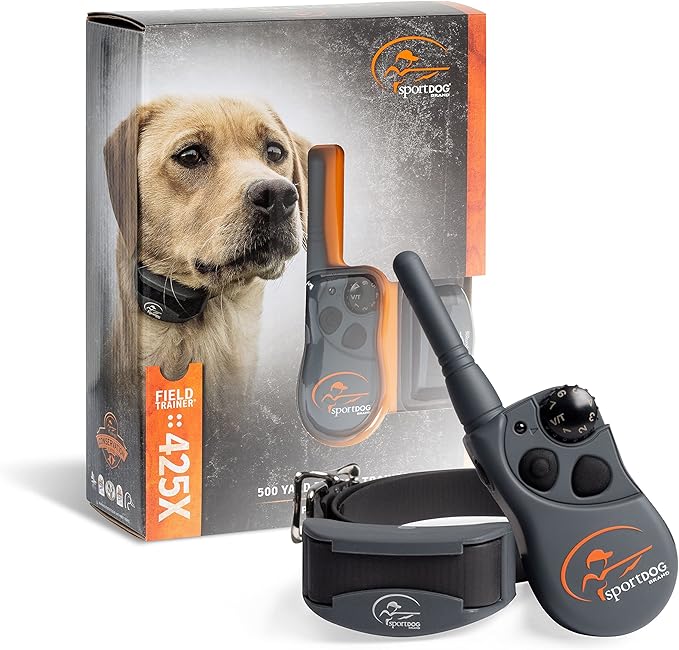
With a 500-yard range, waterproof design, and 21 static levels, plus tone and vibration, the SportDOG 425X gives you real control in real-time. It's built for training outside—rain, mud, or field. Designed for dogs 8 lbs and up with neck sizes 5"–22", it also supports up to three dogs on one remote. The battery charges in two hours and lasts up to 70 hours.
Best for Small Dogs – PaiPaitek Training Collar for Small Dog
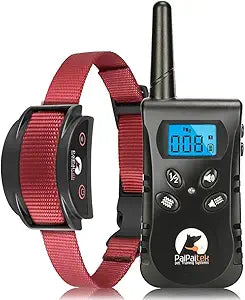
This no-shock PaiPaitek collar skips prongs and uses strong vibration (1–10 levels) and beeps to get your pet's attention. It's perfect for small breeds or even deaf dogs. With a 1,600-ft range and full waterproof build, it works great indoors or out. One charge lasts up to 20 days, so you train more and plug in less.
Best Waterproof – Jugbow Waterproof Training Collar

With an IPX8 waterproof rating and up to 4,200 ft of range, this Jugbow collar handles swimming, running, and beach play. You get three training modes—beep, vibration, and static—plus a night light for visibility. It fits dogs 8 to 120 lbs and has a quick-adjust buckle for easy sizing. One charge lasts weeks, and the remote controls two dogs with memory settings for both.
Best Shock Training Collar – INVIROX Training Shock Collar

The INVIROX Training Shock Collar brings full control with 124 levels of custom settings. You get beep, vibration, and shock, plus a night light and safety keypad lock to prevent accidental zaps. It's built tough and made to fine-tune your dog's behavior without overdoing it. With a ¾-mile range and waterproof build, it's great for large, active canines who train in all weather. One charge gives you up to 15 days of use, backed by 24/7 support and a 1-year warranty.
Are Training Collars for Dogs Safe?
Yes, training collars can be safe when used correctly. Start with the lowest stimulation level and watch how your dog responds. Never leave the collar on too long or use it as a punishment tool. Modern collars also include safety features like keypad locks, auto shutoffs, and waterproofing.
Misconceptions About Training Collars
Many people think training collars are harsh or harmful, but that's not always true. Most modern collars use sound or vibration, not just static. Some people also believe collars replace proper training. They don't. Collars work best when paired with consistency, commands, and rewards.
How To Use Training Collars Humanely and Effectively
Start slow and use the lowest setting that gets your dog's attention. Watch for signs of discomfort or confusion, and adjust as needed. Always pair collar cues with clear instructions and rewards. Keep training sessions short and upbeat. With consistency and kindness, collars can become a helpful part of your pup's routine.
Tips for Training With a Training Collar
Using a dog training collar takes more than just pressing buttons. Here's how you can succeed:
- Start With the Lowest Setting and Observe Reactions
- Combine With Positive Reinforcement and Praise
- Keep Sessions Short and Clear
- Use Commands Before Cues
- Stay Consistent With Timing and Cues
- Avoid Using the Collar When Your Dog Is Upset or Distracted
- Make Sure the Fit Is Snug, Not Tight
- Give Breaks Between Sessions
Start With the Lowest Setting and Observe Reactions
Always begin with the mildest setting your collar allows, and watch how your buddy reacts. If they notice but stay calm, you're in the right zone. If it's too strong, dial it down or switch modes. Every dog is different, and their comfort comes first.
Combine With Positive Reinforcement and Praise
Pair each cue with praise, treats, or play when your pup gets it right. That combo helps your dog connect the behavior with something good. Positive reinforcement builds trust and boosts learning speed. The collar gives the nudge, but you bring the rewards.
Maintenance and Storage Tips
Training collars last longer and work better when you take care of them. Here's what you can do in terms of upkeep:
- Keep Collars Clean and Charged
- Store in a Dry, Cool Place
- Check Fit and Condition Regularly
- Detach Components When Not in Use
- Avoid Overcharging the Battery
- Wipe Down After Wet or Muddy Use
Keeping Collars Clean and Charged
Wipe the collar after each use. A quick clean keeps grime off the contact points and protects your dog's skin. Also, charge it before it dies. Most collars only need a couple of hours for a full charge. A clean, powered-up collar means no hiccups during training.
Replacing Worn or Damaged Parts
Check the collar often for wear, such as frayed straps, loose buckles, or weak battery life. A damaged collar can slip, fail, or irritate your dog's skin. If anything looks off, replace it before the next session. Most brands sell replacement parts like straps, prongs, or chargers.
Frequently Asked Questions About Dog Training Collars
Dog training collars bring up a lot of "what ifs," especially for new pet parents. This section clears things up with helpful answers to the most common concerns, from how long your pup can wear one to how fast they learn. Let's get into these FAQs.
Can a dog wear a training collar all day?
No, training collars aren't meant for all-day wear. Most brands recommend a max of 8–12 hours to avoid skin irritation. Always remove it at night or during downtime. Also, check your dog's neck daily for redness or pressure spots. Shift the collar's position often to keep things comfy.
How long does it take for a dog to respond to a training collar?
Some dogs pick it up in a few sessions, while others take a couple of weeks. It depends on their age, personality, and how consistent you are with training. Use clear commands, reward good behavior, and keep distractions low. The collar helps send the message, but your timing and tone matter just as much.
What's the difference between a bark collar and a training collar?
A bark collar works automatically. It responds to barking with a beep, vibration, or mild static, no remote needed. It's made just for controlling noise.
A training collar, on the other hand, gives you full control with a remote. You choose when to send a signal and what kind. It's ideal for teaching multiple commands, not just quiet time.
Do vets recommend training collars for behavior correction?
Some vets do but with conditions. Most support training collars when used correctly and paired with positive reinforcement. If your dog has anxious behaviors or health concerns, ask your vet before starting. They might suggest other training methods or help guide safe collar use based on your pup's needs.
Can training collars help with leash pulling?
Yes, they can, especially for dogs that tug like it's a sport. A quick beep or vibration helps refocus their attention and remind them to slow down. Use the collar with a short leash and clear commands. Reward loose-leash walking with treats or praise. Over time, your pup learns that pulling gets them nowhere but walking nicely brings all the good stuff.
What age should my dog be before using a training collar?
Most dogs should be at least 6 months old before using a training collar. Younger pups are still learning basic cues and may not respond well to extra stimulation. Always check the collar's size and age guidelines. Start with simple training first, then add the collar when your dog's ready to focus and follow through.
Final Thoughts – Choosing the Best Dog Training Collar for Your Pup's Needs
Not every dog needs the same collar or the same approach. Some thrive with a beep, while others need a nudge with vibration. The best pick is the one that fits your dog's body, behavior, and training style like a glove.
Training should feel like teamwork, not tension. And if your pup's feeling a little wired or agitated, HolistaPet's calming CBD collection can help bring the chill while you work on the skills.



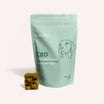


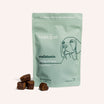
![Probiotics For Dogs [Soft Chews] - HolistaPet](http://www.holistapet.com/cdn/shop/files/Probiotic-Infographic-1_472d7a29-e30c-435a-9638-1365d8c3a9f9.jpg?v=1725384841&width=104)
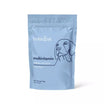




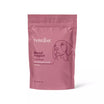
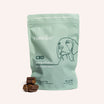

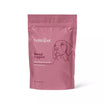
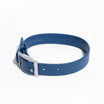

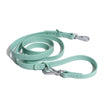
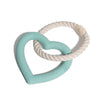
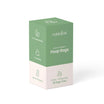
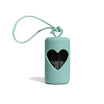
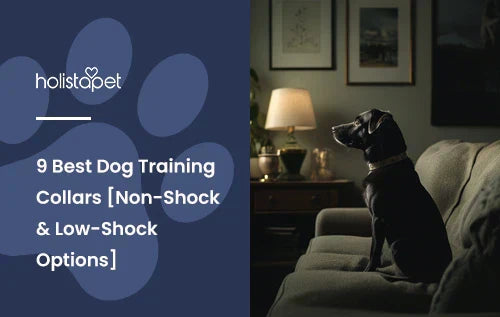
 Broad Spectrum CBD Oil for Dogs - Fast Acting
Broad Spectrum CBD Oil for Dogs - Fast Acting
 Chicken Flavored CBD Oil For Dogs - Easy Dose
Chicken Flavored CBD Oil For Dogs - Easy Dose
 Salmon Flavored CBD Oil For Dogs - Highly Rated
Salmon Flavored CBD Oil For Dogs - Highly Rated
 CBD Dog Treats for Anxiety - Loved by Thousands
CBD Dog Treats for Anxiety - Loved by Thousands





Leave a comment
All comments are moderated before being published.
This site is protected by hCaptcha and the hCaptcha Privacy Policy and Terms of Service apply.